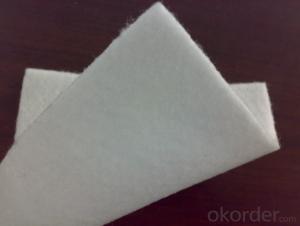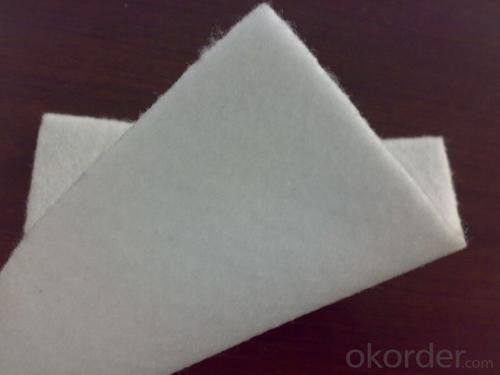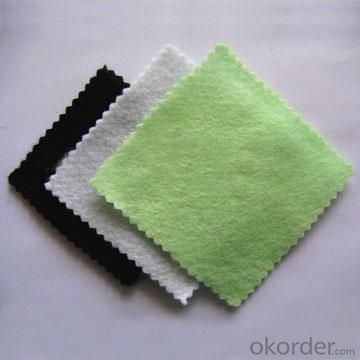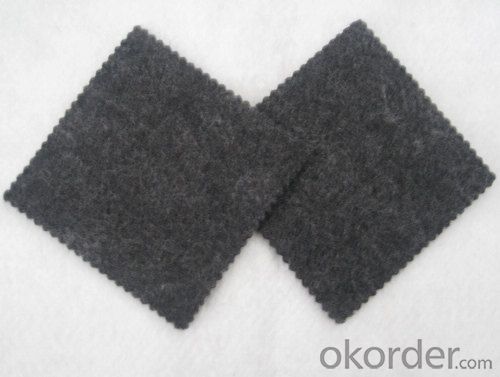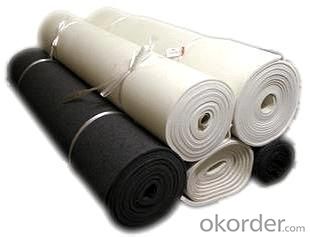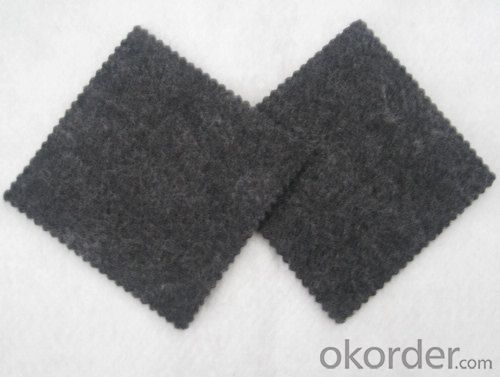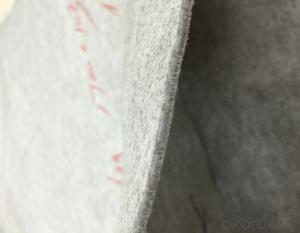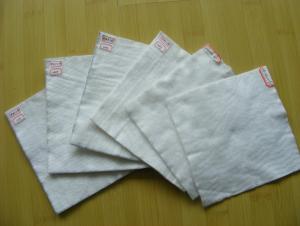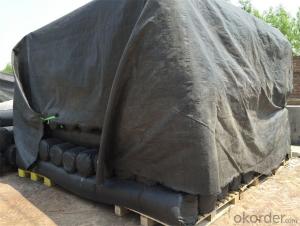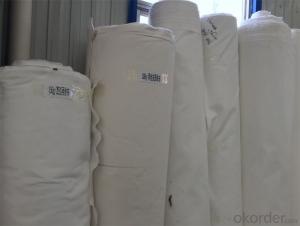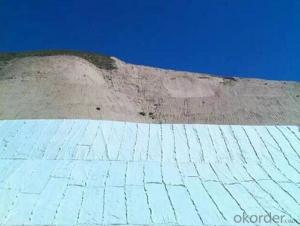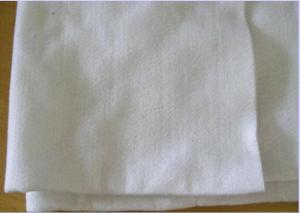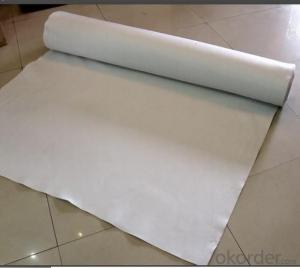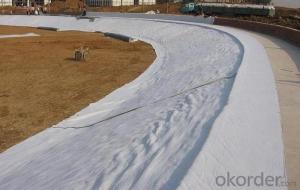Venda Geotextil Non Woven Polyester Geotextile with Black Color
- Loading Port:
- Qingdao
- Payment Terms:
- TT OR LC
- Min Order Qty:
- 5000 m²
- Supply Capability:
- 1000000 m²/month
OKorder Service Pledge
OKorder Financial Service
You Might Also Like
PET Geotextile Product Description:
PET Geotextile Specifications:
1, Biggest Width: 6meter
2, Weight: about 1000gsm
3, Treatment: UV protect
PET Geotextile Application:
A: Subsurface drainage
B: Roadway separation
C: Hard armor underlayment
D:Asphalt overlay applications
PET Specification :
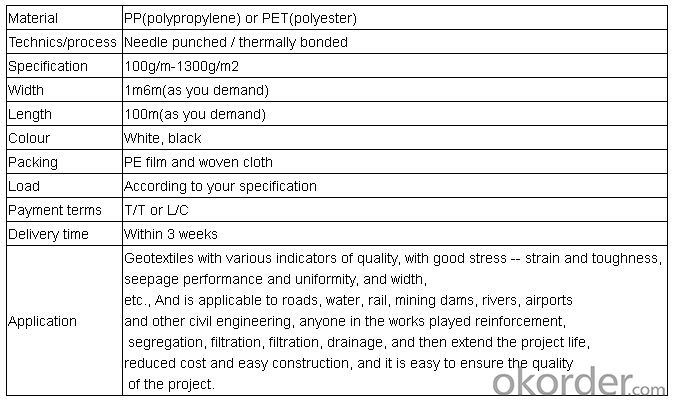
PET Geotextile Functions and Features:
1)Excellent weed control
2)Excellent UV resistance
3)Moisture,fertilizers,air reach plants to allow for healthy soil
4)Good water and air permeability
5)Exceptional toughness and strength
6)Durable,tear-resistant,anti-rot and anti-mildew
7)Light weight,easy to install,follows natural ground contours
8)Ideal for use in landscaped beds,under decks and walkways
9)Fashionable design,high quality,competitive price
10)Long service life
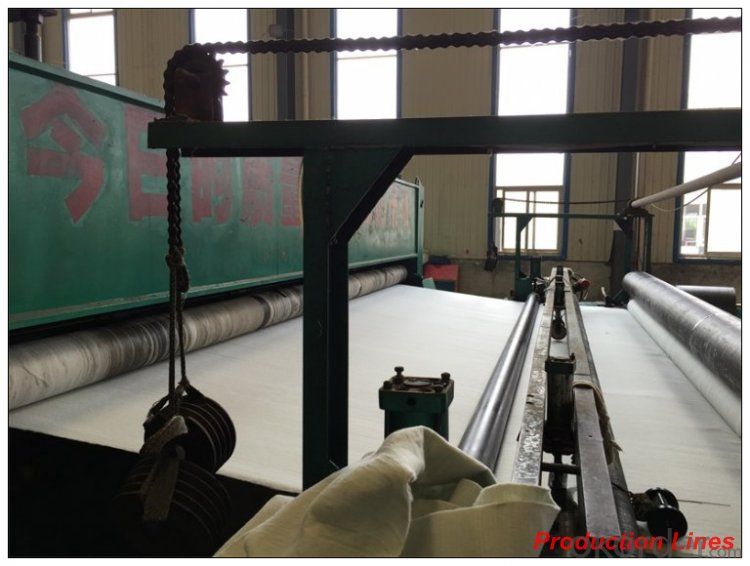
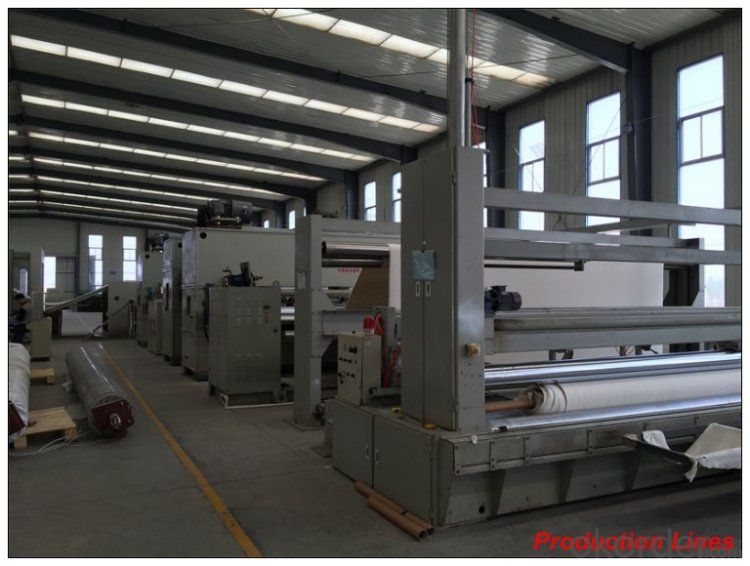
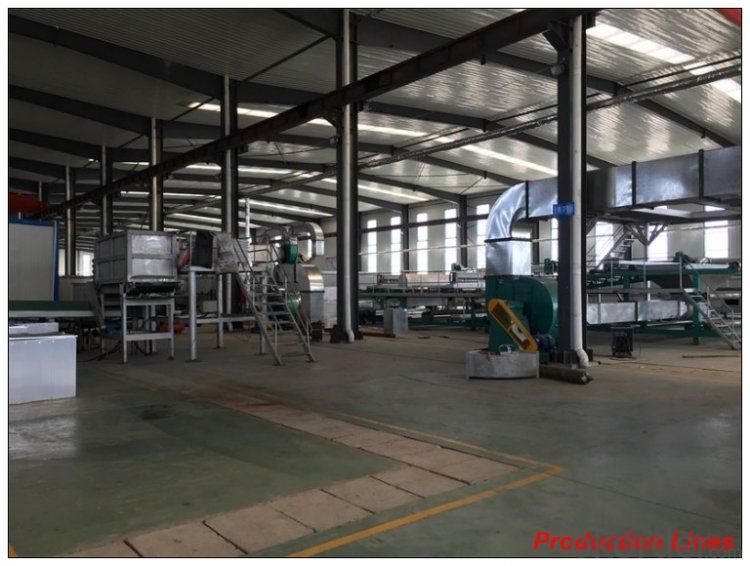
FAQ:
Q1: What is your minimum order quantity?
A:The minimum order quantity is 5000 ,but it is negotiable.
Q2:What is your payment terms?
A: T/T,Western Union,Paypal,L/C...
Q3:What is your delivery time?
A:Production time usually costs 2-20 days.
Waiting to cooperate with you!
- Q: The properties of woven geotextiles
- Product features: 1, with a reinforcement function: to stabilize the project in the course of prolonged use of the transfer occurred, and can be the role of the soil in the local stress transmission or assigned to a larger area. 2, with the role of separation: woven geotextile with different geotechnical structure to form a stable interface, in accordance with the requirements to play their own characteristics and the overall role. 3, the role of drainage filter: allow moisture to block the loss of sand particles, in the drainage of geotextiles on the poor water in the soil can play the water along the geotextile quickly discharged the purpose. 4, the geotextile and geomembrane used in two different pressures between the material can play a role in tension diaphragm. 5, with a block function: the geotextile placed in the flow of liquid with suspended particles in the channel to organize fine mud particles, and allow the liquid through the function. 6, play the role of cushion mat: the geotextile placed on the slope can prevent the soil particles due to the erosion of rain and the loss or planting turf.
- Q: A creek next to our property is eating away the embankment and an engineer suggested using the sand in the creek bed.. wrapping it up in geotextile fabric in the form of a burrito but he did mnot mention how to fasten them shut..any ideas or experience with erosion control out there?
- Get some tie wire or baling wire. It's a soft wire used for tying reinforcing steel together or for baling straw. You could also use plastic cable ties.
- Q: What is the difference between nonwovens and geotextiles? What is the difference between geotextiles and nonwovens?
- Geotextile is divided into two non-woven geotextile and woven geotextile, non-woven geotextile and acupuncture and spunlace, staple fiber and long fiber. Nonwovens means that the manufacturing process does not require weaving. Geotextiles are used for geotechnical engineering. Geotextile is part of the textile does not require the manufacture can be made, called non-woven geotextile. Non-woven fabrics can be used very broad, like we use the heart of the soft wipes, are non-woven, as well as the hotel put the shoes of the shoes, but also non-woven.
- Q: How do geotextiles aid in the filtration of water?
- Geotextiles aid in the filtration of water by acting as a barrier that allows water to pass through while trapping and retaining suspended particles, sediments, and pollutants. They provide a physical separation between different soil layers, preventing the mixing of fine and coarse particles, thus enhancing the filtration process. Additionally, geotextiles promote the growth of beneficial microorganisms that assist in the breakdown and removal of contaminants, further improving water quality.
- Q: What are the factors to consider when designing geotextile tubes for dewatering?
- When designing geotextile tubes for dewatering, there are several factors to consider. These include the nature and composition of the sediment or sludge to be dewatered, the required dewatering rate, the size and shape of the geotextile tubes, the strength and permeability of the geotextile material, the location and environmental conditions, and the availability of equipment for filling and handling the tubes. Additionally, factors such as cost, durability, and the potential for reuse or disposal of the dewatered material should also be taken into account.
- Q: Can geotextiles be used in shoreline erosion control projects?
- Yes, geotextiles can be effectively used in shoreline erosion control projects. Geotextiles are permeable fabrics that can be installed along shorelines to stabilize the soil and prevent erosion caused by waves and currents. They can be used as a layer to separate the soil from the water, allowing for water filtration while reducing soil erosion.
- Q: How do geotextiles help in gas venting?
- Geotextiles help in gas venting by providing a permeable barrier that allows the passage of gases while preventing the migration of soil particles. This allows gases, such as methane, to escape from the ground, reducing the risk of buildup and potential hazards.
- Q: What are the key factors affecting the clogging behavior of geotextiles?
- The key factors affecting the clogging behavior of geotextiles include the particle size and gradation of the soil or other material being filtered, the permeability and porosity of the geotextile, the hydraulic loading conditions, the presence of fines or clay particles in the soil, and the duration of exposure to clogging agents. Other factors such as the geotextile's physical and chemical properties, the presence of biological organisms, and the maintenance practices also play a role in determining the clogging behavior.
- Q: Google for a long time only geotextile ads! The The Do not know geotextile, drainage board such materials, in what kind of shop which has to sell? Because the building materials market to a circle, people did not sell this thing more
- I professional production of drainage board, geotextile, geomembrane and other products, wish smooth
Send your message to us
Venda Geotextil Non Woven Polyester Geotextile with Black Color
- Loading Port:
- Qingdao
- Payment Terms:
- TT OR LC
- Min Order Qty:
- 5000 m²
- Supply Capability:
- 1000000 m²/month
OKorder Service Pledge
OKorder Financial Service
Similar products
Hot products
Hot Searches
Related keywords
